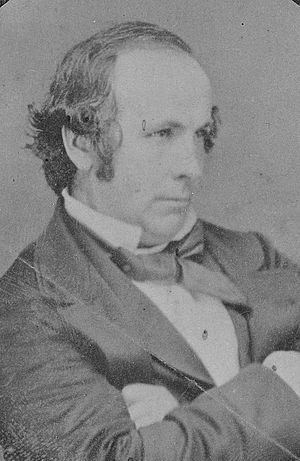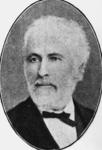Thomas Henry Fitzgerald facts for kids
Quick facts for kids
Thomas Fitzgerald
|
|
|---|---|
 |
|
| 1st Superintendent of Hawke's Bay Province | |
| In office 23 April 1859 – March 1861 |
|
| Succeeded by | John Chilton Lambton Carter |
| Member of the New Zealand Parliament for County of Hawke |
|
| In office 26 April 1860 – 5 November 1860 |
|
| 7th Treasurer of Queensland | |
| In office 25 November 1868 – 27 January 1869 |
|
| Preceded by | Robert Mackenzie |
| Succeeded by | Thomas Blacket Stephens |
| Constituency | Kennedy |
| Member of the Queensland Legislative Assembly for Rockhampton |
|
| In office 27 June 1867 – 11 July 1867 |
|
| Preceded by | Charles Fitzsimmons |
| Succeeded by | Archibald Archer |
| Member of the Queensland Legislative Assembly for Kennedy |
|
| In office 19 July 1867 – 11 June 1869 |
|
| Preceded by | George Elphinstone Dalrymple |
| Succeeded by | John Bright |
| Member of the Queensland Legislative Assembly for Bowen |
|
| In office 4 November 1873 – 5 May 1875 |
|
| Preceded by | New seat |
| Succeeded by | Francis Amhurst |
| Personal details | |
| Born |
Thomas Henry Fitzgerald
1 December 1824 Carrickmacross, County Monaghan, Ireland |
| Died | 10 November 1888 (aged 63) Teneriffe, Queensland |
| Resting place | Nudgee Cemetery |
| Spouse | Jessie Wilson |
| Relations | Charles Borromeo Fitzgerald (son) Paddy Fitzgerald (grandson) |
| Occupation | Public Servant, Sugarcane Farmer Surveyor |
Thomas Henry Fitzgerald (born December 1, 1824 – died November 10, 1888) was an Irish pioneer. He was important in starting sugar cane farming in Queensland, Australia. Thomas was also a politician, first in New Zealand, then in Queensland. Many of his family members later became well-known in Queensland politics, business, and law. He is most remembered for creating the town of Innisfail.
Thomas Fitzgerald had a very interesting life. He worked as a surveyor, a sugar cane farmer, and a politician. He was a leader in his community and helped shape new areas.
Contents
Early Life in Ireland
Thomas Henry Fitzgerald was born in Carrickmacross, County Monaghan, Ireland. This was in December 1824. He became a trained engineer. Like many Irish people at that time, he left Ireland. He hoped to find new opportunities elsewhere.
Adventures in New Zealand
Fitzgerald moved to New Zealand in 1842. He traveled with one of his sisters. They followed his brother John, who was a doctor. In New Zealand, Thomas trained and worked as a surveyor. He also gained skills as an engineer and architect.
In 1844, he bought land in Khandallah. This is now a suburb of Wellington. On July 2, 1851, he married Jessie Wilson in Wellington. She was the oldest daughter of James Wilson.
Designing Buildings
Fitzgerald designed a special school for Māori girls. It was called St Joseph's Providence. This Catholic charity school was in Thorndon. It was part of the new St Mary's College. The building had two floors and 18 bedrooms. It opened in September 1852. The building was taken down in the 1970s. Only a small porch from an older part remains.
Business and Politics
In 1853, the Fitzgerald family moved to the Hawke's Bay Region. Thomas surveyed the land there. He owned two general stores, including one in Napier. He also built a steam flour mill in Napier. He worked as an agent for shipping and insurance companies. He also bought and sold wool.
Fitzgerald was very active in Hawke's Bay politics. He represented the Ahuriri area in the Wellington Provincial Council. This was from November 1857 to November 1858. His father-in-law, James Wilson, was also on the council.
Fitzgerald helped separate Hawke's Bay Province from Wellington Province. This happened in November 1858. He then represented Napier in the first Hawke's Bay Provincial Council. This was from February 1859 to November 1861.
Becoming a Superintendent
On April 23, 1859, the Hawke's Bay provincial council met for the first time. They chose Fitzgerald as the province's first Superintendent. He held this important job until March 1861. He then resigned.
His selection surprised many people. They expected a close election between others. But the council was split, so they chose Fitzgerald. He first took the job without pay. Later, he received a yearly salary. His time as Superintendent had some disagreements. There were two groups: the "town" group from Napier and a "country" group.
Fitzgerald also represented the County of Hawke in the 2nd New Zealand Parliament. This was in 1860, from April 26 to November 5. In 1862, he faced financial difficulties. This led him to move to Queensland.
Life in Queensland
In 1862, Fitzgerald moved to the colony of Queensland, Australia. He settled in Brisbane. There, he saw early attempts to grow sugar cane. This was in Queensland's warm, wet climate.
In 1866, he was surveying land in Mackay, Queensland. He then started the Alexandra sugar cane plantation. Over time, he built four more plantations in that area. The Alexandra mill was special. It used new, more efficient ways to process sugar cane. This made sugar cane farming easier for smaller farmers. Before this, they mostly grew cotton and corn.
More and more land was used for sugar cane. In 1865, there were about 20 acres. By 1871, it grew to 2,493 acres. By 1884, it reached 19,320 acres.
Fitzgerald was involved in many things. He ran businesses, worked in politics, and continued as a surveyor. He even planned the original town layout for what is now the city of Mackay.
Political Roles in Queensland
In the 1867 Queensland colonial election, Fitzgerald ran for two seats. He won in Rockhampton first. But he preferred the Kennedy seat, which he also won. He resigned from Rockhampton to take the Kennedy seat.
In November 1868, Fitzgerald became the Colonial Treasurer. This was in Charles Lilley's government. He held this job for three months. He then resigned from that role. In June 1869, he resigned from the Kennedy seat.
Between 1873 and 1875, Fitzgerald represented the Bowen area. He wanted to bring in cheaper workers for the cane fields. These were South Sea Islanders who came as indentured laborers. Fitzgerald had a financial interest in this. The sugar industry was facing tough times. Cheap labor seemed like a solution.
However, Fitzgerald and other farmers faced more problems. Heavy rains caused widespread cane rust. In 1876, Fitzgerald faced financial trouble again. He had to resign from Parliament for good.
Founding Innisfail
Fitzgerald returned to Brisbane and continued surveying. But he still dreamed of building new settlements in far north Queensland. With some support from the Catholic Church, he started a new project in 1880. He created a sugar cane plantation called Innisfail Estate. This became the town of Innisfail.
The early years were very hard for Fitzgerald. Flooding made farming difficult. Sugar prices were low. It was also tough to compete with bigger mills. Managing diseases in new settlements was also a challenge.
Later Life and Legacy
Fitzgerald retired to Teneriffe, Queensland in Brisbane. He was not in good health. He died there on November 10, 1888, at age 64. Fitzgerald was buried in Nudgee Cemetery.
What He Left Behind
Thomas Fitzgerald had many ups and downs financially. But he is remembered for his pioneering spirit. He wanted to build something great, even with many failures. He imagined a rich and fertile far north Queensland. An area that could support many people. The places he surveyed, from Daintree to Tully, are now popular tourist spots. They are also productive farmlands.
He took the first important steps in creating this region's modern farming industry. His successful methods at the Alexandra mill encouraged others. This helped create an entire industry. It also helped North Queensland's economy grow strong.
Innisfail was first the name of Fitzgerald's own property. The Surveyor-General named the town Geraldton in his honor in 1882. But a ship once went to the wrong Geraldton. It was supposed to go to Geraldton in Western Australia. So, in 1910, the town's name was officially changed to Innisfail. A school in North Mackay is also named after him.
Fitzgerald also left a legacy through his family. He had 11 children. His son, Charles Borromeo Fitzgerald, was very notable. Charles was a politician from 1896 to 1902. He became the Attorney-General. This was in the world's first labor government. Later generations of his family became successful in business, law, education, and the military.
Another legacy is the place name of Te Kowai, Queensland. Fitzgerald named it after the Kōwhai flower. He first saw this flower in New Zealand when he was younger.
Images for kids



